สวัสดีครับทุกคน! ผมคือ Michael Zhang นักเดินทางชาวจีนที่มีประสบการณ์ท่องเที่ยวระดับนานาชาติอย่างกว้างขวาง และยังเป็นผู้ที่ชื่นชอบประวัติศาสตร์และวัฒนธรรม สำหรับผมแล้ว การเดินทางไม่ได้หมายถึงเพียงการไปเช็กอินตามสถานที่ยอดฮิตเท่านั้น แต่ยังเป็นการเรียนรู้รากเหง้าวัฒนธรรมและบริบททางประวัติศาสตร์ของแต่ละเมืองด้วย ในบทความนี้ ผมจะพาทุกคนไปสำรวจ สุสานหมิงสิบสามแห่ง (Ming Thirteen Tombs) หนึ่งในสถานที่ท่องเที่ยวสำคัญของปักกิ่ง ที่ผสมผสานสถาปัตยกรรมอันยิ่งใหญ่ เรื่องราวทางประวัติศาสตร์ และธรรมชาติที่งดงาม ไม่ว่าคุณจะเป็นนักเดินทางที่ชอบค้นคว้าวัฒนธรรมเชิงลึก หรือเพียงแค่มาเที่ยวชมแบบสบาย ๆ ที่นี่จะมีสิ่งที่ทำให้คุณประทับใจอย่างแน่นอน
สารบัญบทความ
แนะนำสุสานหมิงสิบสามแห่ง
สุสานหมิงสิบสามแห่ง (明十三陵) คือสถานที่ฝังพระบรมศพของจักรพรรดิราชวงศ์หมิงถึง 13 พระองค์ ตั้งอยู่บริเวณเชิงเขาเทียนโซ่วซาน ทางตอนเหนือของเขตชางผิง กรุงปักกิ่ง การเลือกพื้นที่ก่อสร้างเริ่มขึ้นหลังจากจักรพรรดิหย่งเล่อย้ายเมืองหลวงมายังปักกิ่ง ด้วยเหตุผลด้านการเมืองและยุทธศาสตร์ เพื่อเสริมสร้างอำนาจจักรพรรดิและกำจัดอิทธิพลที่หลงเหลือจากราชวงศ์หยวน การก่อสร้างเริ่มขึ้นตั้งแต่ปี ค.ศ.1409 (พ.ศ.1952) และใช้เวลากว่า 230 ปี จนถึงสมัยราชวงศ์ชิงช่วงต้นสุสานเหล่านี้จึงเสร็จสมบูรณ์
สุสานที่นี่ประกอบไปด้วยสุสานจักรพรรดิถึง 13 แห่ง ได้แก่ สุสานฉางหลิง, สุสานเซี่ยนหลิง, สุสานจิ่งหลิง, สุสานอวี้หลิง, สุสานเหมา หลิง, สุสานไท่หลิง, สุสานคังหลิง, สุสานหย่งหลิง, สุสานเจา หลิง, สุสานติงหลิง, สุสานชิ่งหลิง, สุสานเต๋อหลิง และสุสานซือหลิง
ทั้งพื้นที่ยังเป็นที่ฝังพระบรมศพจักรพรรดิ 13 พระองค์, พระมเหสี 23 พระองค์, หวงกุ้ยเฟย 1 พระองค์ และพระสนมผู้ติดตามอีกหลายสิบคน ความสำคัญทางประวัติศาสตร์ทำให้ที่นี่ถูกขึ้นทะเบียนเป็นมรดกโลกโดย UNESCO ในปี ค.ศ.2003 และกลายเป็นหนึ่งในมรดกทางวัฒนธรรมที่ทั่วโลกจับตามอง
- ที่อยู่: เขตชางผิง กรุงปักกิ่ง บริเวณเชิงเขาเทียนโซ่วซาน (Apple Maps / Amap)
- พื้นที่: 40 ตารางกิโลเมตร
- เวลาเปิดทำการ:
- ฤดูท่องเที่ยว (เมษายน–ตุลาคม): 08:00–17:30
- นอกฤดูท่องเที่ยว (พฤศจิกายน–มีนาคม): 08:30–17:00
- เวลาเที่ยวแนะนำ: 4–5 ชั่วโมง
- ฤดูกาลที่เหมาะสมที่สุด: สามารถเที่ยวได้ทั้งปี แต่ช่วงฤดูใบไม้ผลิ (เมษายน–พฤษภาคม) และฤดูใบไม้ร่วง (กันยายน–ตุลาคม) อากาศดีที่สุดและวิวสวยที่สุด
- การซื้อตั๋ว: Trip.com มีโปรโมชั่นพิเศษ
- เปรียบเทียบราคาตั๋วและดูดีลล่าสุด: คลิกตรวจสอบที่นี่
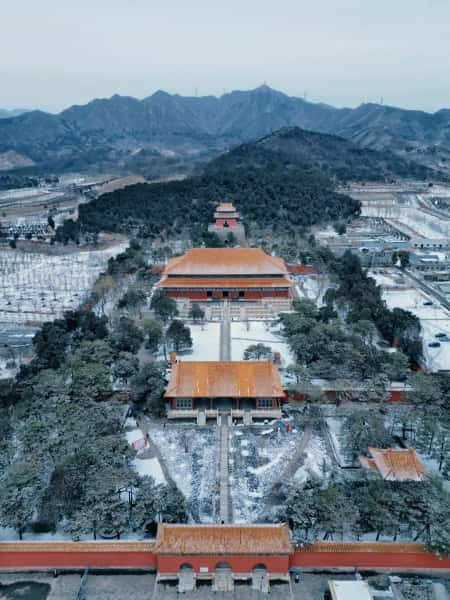
แผนที่สุสานหมิงสิบสามแห่ง
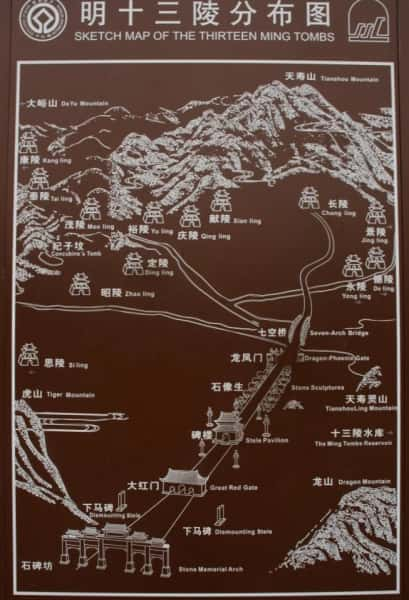
ทำไมถึงควรไปเที่ยวสุสานหมิงสิบสามแห่ง?
สัมผัสวัฒนธรรมและประวัติศาสตร์ของราชวงศ์หมิง
สุสานหมิงสิบสามแห่ง เป็นสถานที่ฝังจักรพรรดิ 13 พระองค์จากทั้งหมด 16 พระองค์ของราชวงศ์หมิง แสดงให้เห็นถึงวัฒนธรรมจักรพรรดิและการเมืองที่รุ่งเรืองในยุคนั้น การมาเที่ยวที่นี่จะช่วยให้คุณเข้าใจพัฒนาการทางประวัติศาสตร์และวิถีชีวิตของสังคมในสมัยหมิงได้ชัดเจนขึ้น สำหรับผู้ที่สนใจวัฒนธรรมและประวัติศาสตร์จีนโบราณ ถือเป็นโอกาสที่ไม่ควรพลาด
ชมความงดงามของสถาปัตยกรรมและศิลปะโบราณ
สุสานหมิงสิบสามแห่งไม่ได้เป็นเพียงที่ฝังจักรพรรดิเท่านั้น แต่ยังเป็นสุดยอดผลงานทางสถาปัตยกรรมและศิลปะการแกะสลักของจีนโบราณ ตั้งแต่โครงสร้างสุสานที่ยิ่งใหญ่อลังการ ไปจนถึงงานแกะสลักหินที่ละเอียดอ่อน ทุกมุมสะท้อนฝีมือช่างและความงดงามตามแบบสมัยหมิงได้อย่างชัดเจน ไม่ว่าคุณจะเป็นสายสถาปัตยกรรมหรือศิลปะ ก็จะต้องประทับใจในความยิ่งใหญ่ของที่นี่
สัมผัสธรรมชาติและวัฒนธรรมที่ผสมผสานกันอย่างลงตัว
สุสานตั้งอยู่ท่ามกลางหุบเขาที่เงียบสงบของเทียนโซ่วซาน ล้อมรอบด้วยภูเขาและธรรมชาติที่งดงาม นอกจากสิ่งก่อสร้างอันยิ่งใหญ่แล้ว ยังมีทิวทัศน์ที่สวยงามของภูเขาและสายน้ำให้ได้เพลิดเพลินอีกด้วย การมาเที่ยวที่นี่ทำให้คุณได้ทั้งเรียนรู้ประวัติศาสตร์และซึมซับบรรยากาศธรรมชาติไปพร้อมกัน ถือเป็นการเดินทางที่ช่วยเติมเต็มทั้งความรู้และความสุขทางจิตใจอย่างแท้จริง
กิจกรรมที่ไม่ควรพลาดเมื่อเที่ยวสุสานหมิงสิบสามแห่ง
สถานที่สำคัญ
ปัจจุบันสุสานหมิงสิบสามแห่งเปิดให้เข้าชมเพียง เส้นทางศักดิ์สิทธิ์ (Shen Dao) และสุสานหลัก 3 แห่ง ได้แก่ สุสานติงหลิง (Ming Dingling), สุสานฉางหลิง (Ming Changling) และ สุสานเจาลิง (Ming Zhaoling) ด้านล่างนี้คือรายละเอียดของแต่ละสถานที่
เส้นทางศักดิ์สิทธิ์ (Shen Dao)
เส้นทางศักดิ์สิทธิ์ หรือที่เรียกว่า “เสิ่นต้า” เป็นเส้นทางหลักที่ใช้ร่วมกันของสุสานทั้ง 13 แห่ง ทำหน้าที่เป็นแนวทางของสถาปัตยกรรมเหนือพื้นดินของสุสานจักรพรรดิในสมัยหมิง เส้นทางเริ่มต้นจากซุ้มประตูหินทางทิศใต้ ไปจนถึงสุสานฉางหลิงทางทิศเหนือ มีความยาวประมาณ 7,000 เมตร ตลอดทางมีสิ่งก่อสร้างสำคัญ เช่น ประตูลิ่งซิง (Lingxing Gate), สะพานห้าช่อง, สะพานเจ็ดช่อง และกลุ่มประติมากรรมหิน จากสะพานเจ็ดช่อง เส้นทางจะเริ่มแตกแขนงไปยังสุสานแต่ละแห่ง ซึ่งสะท้อนให้เห็นถึงความงดงามในการวางผังสถาปัตยกรรมของสมัยหมิง
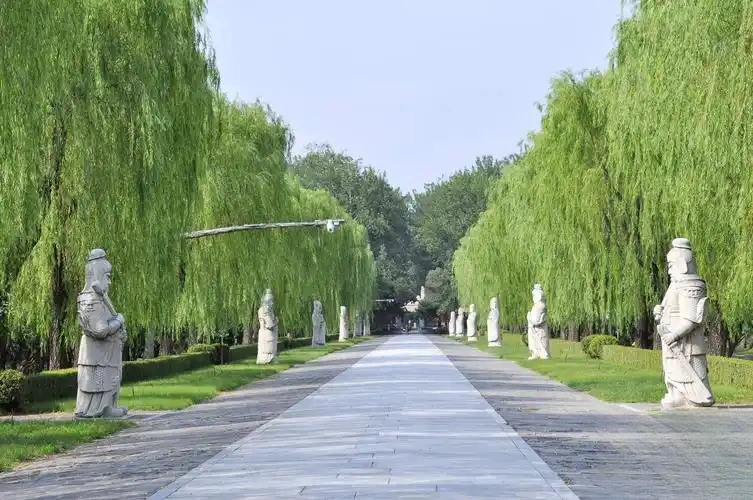
สุสานติงหลิง (Ming Dingling)
สุสานติงหลิง คือที่ฝังพระศพของจักรพรรดิหมิงองค์ที่ 13 จักรพรรดิหว่านลี่ (朱翊鈞) พร้อมด้วยพระมเหสีอีกสองพระองค์ สุสานตั้งอยู่เชิงเขาต้าหยวี่ซาน ทางตะวันตกเฉียงใต้ใกล้สุสานฉางหลิง สร้างขึ้นระหว่างปี ค.ศ.1584–1590 (พ.ศ.2127–2133) ครอบคลุมพื้นที่กว่า 182,000 ตารางเมตร
อาคารสำคัญในสุสาน ได้แก่ ประตูหลิงเอิน (Ling’en Gate), หอหลิงเอิน (Ling’en Hall), กำแพงล้อม, หอหมิง และพระราชวังใต้ดิน จุดเด่นคือสุสานแห่งนี้เป็นแห่งเดียวในบรรดาสุสานหมิงที่ถูกขุดค้นทางโบราณคดี และเปิดให้นักท่องเที่ยวเข้าชมพระราชวังใต้ดิน ซึ่งทำให้เห็นโครงสร้างจริงของสุสานจักรพรรดิในสมัยหมิง
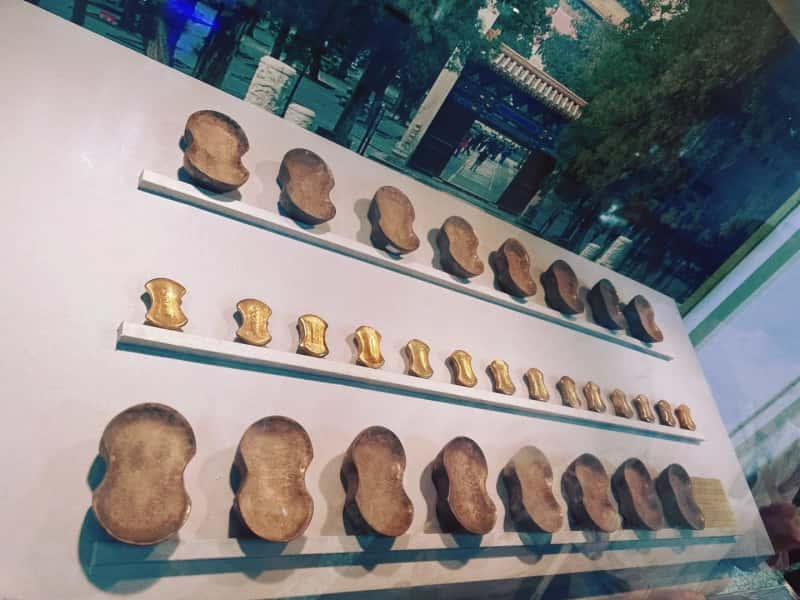
สุสานฉางหลิง (Ming Changling)
สุสานฉางหลิง ตั้งอยู่ที่ยอดเขากลางของเทียนโซ่วซาน เป็นที่ฝังพระศพจักรพรรดิหมิงองค์ที่ 3 จักรพรรดิหย่งเล่อ (朱棣) และพระมเหสีหงเซี่ยวเหวิน (徐氏) สุสานแห่งนี้เริ่มสร้างขึ้นในปี ค.ศ.1409 (พ.ศ.1952) และยังถูกเรียกว่า “พระราชวังชีวิตอมตะ” ของจักรพรรดิหย่งเล่อ
สุสานฉางหลิงถือเป็นสุสานที่ใหญ่ที่สุดและยิ่งใหญ่ที่สุดในบรรดาสุสานหมิงทั้ง 13 แห่ง วัสดุที่ใช้ก่อสร้างถูกคัดเลือกอย่างพิถีพิถันและงานก่อสร้างละเอียดมาก โดยเฉพาะพระราชวังใต้ดินที่ใช้เวลาสร้างถึง 4 ปี ถือเป็นสิ่งมหัศจรรย์ทางวิศวกรรมที่สะท้อนระดับสูงสุดของสถาปัตยกรรมสมัยหมิง
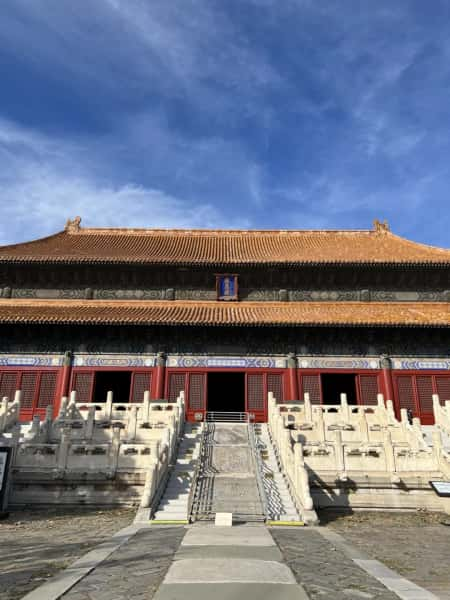
สุสานเจาลิง (Ming Zhaoling)
สุสานเจาลิง ตั้งอยู่ทางเชิงเขาต้าหยวี่ซานด้านตะวันออก เป็นที่ฝังพระศพจักรพรรดิหมิงองค์ที่ 12 จักรพรรดิมู่จง (朱載坖 – รัชศกหลงชิ่ง) พร้อมพระมเหสี 3 พระองค์ สุสานแห่งนี้เป็นแห่งแรกที่ได้รับการบูรณะครั้งใหญ่ และปัจจุบันเปิดให้นักท่องเที่ยวเข้าชมอย่างเป็นทางการ
สุสานครอบคลุมพื้นที่กว่า 35,000 ตารางเมตร ปัจจุบันยังคงมีสิ่งปลูกสร้างสำคัญ เช่น ประตูหลิงเอิน, หอหลิงเอิน, ศาลาข้างตะวันออก–ตะวันตก, ป้อมสี่เหลี่ยม, หอหมิง และเนินฝังศพ (Baoding) ทั้งหมดสะท้อนถึงความยิ่งใหญ่และความสง่างามหลังการบูรณะ
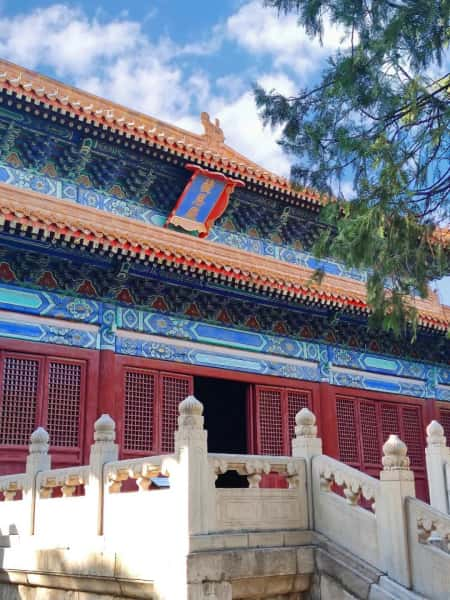
ซุ้มประตูหิน (Stone Archway)
ซุ้มประตูหินเป็นสัญลักษณ์สำคัญที่ทางเข้าสุสาน ตั้งอยู่ระหว่างภูเขาทรายทางตอนใต้ของพื้นที่สุสาน สร้างขึ้นในปี ค.ศ.1540 (พ.ศ.2083) ในรัชสมัยจักรพรรดิเจียจิ้ง เพื่อสรรเสริญพระบารมีของบรรพบุรุษ โครงสร้างทั้งหมดทำจากหินขาวขนาดใหญ่ เชื่อมต่อกันด้วยเทคนิคไม้สลักหินแบบโบราณ กว้าง 28.86 เมตร สูงราว 12 เมตร
บนซุ้มประตูประดับด้วยลวดลายแกะสลัก เช่น มังกร สิงโต และดอกไม้ แสดงให้เห็นถึงฝีมือช่างหินชั้นยอดของราชวงศ์หมิง
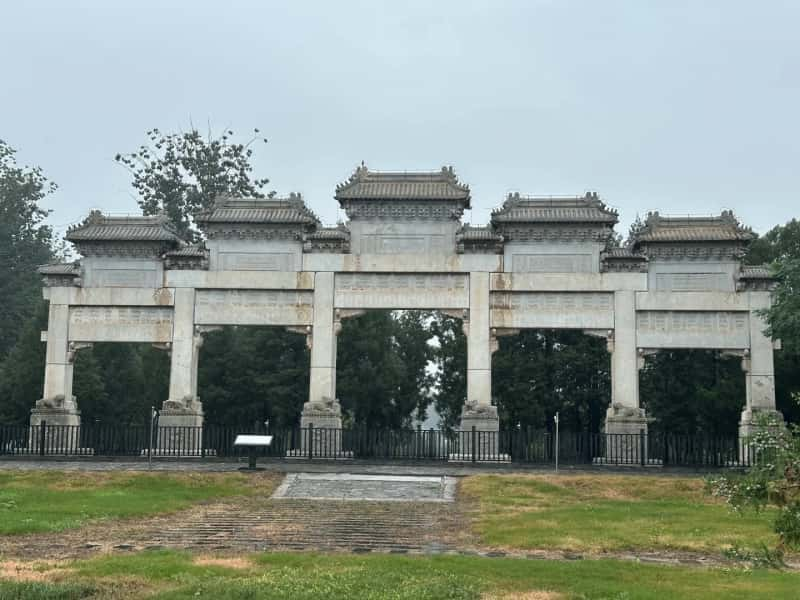
ประตูใหญ่ (Great Palace Gate)
ประตูใหญ่ หรือที่เรียกว่า “ต้า หงเหมิน” คือประตูหลักของสุสาน โครงสร้างเป็นซุ้มโค้ง 3 ช่อง หลังคามุงด้วยกระเบื้องเคลือบสีเหลือง ตัวประตูทาด้วยสีแดงเข้ม แสดงถึงความโอ่อ่าของราชสำนัก ด้านหน้าแต่ละฝั่งมีศิลาจารึก “ป้ายลงจากม้า” (Stele of Dismounting) ซึ่งสลักข้อความว่า “เจ้าหน้าที่ทุกคนต้องลงจากม้าที่นี่” สะท้อนถึงความศักดิ์สิทธิ์ของสุสาน
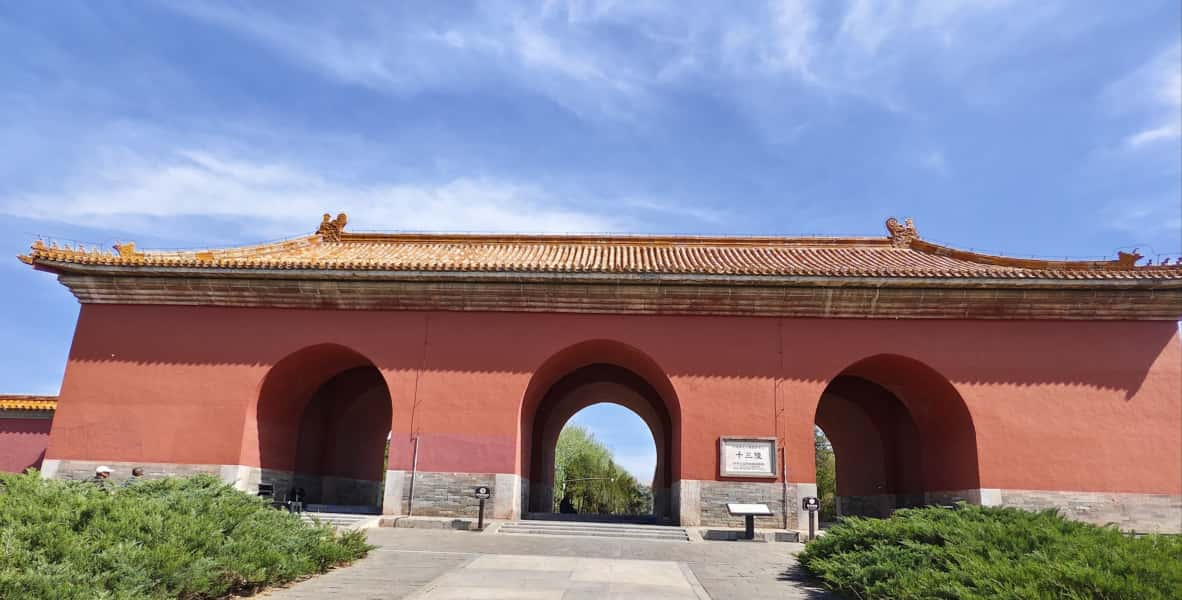
ศาลาแท่นหินจารึก (Stele Pavilion)
ศาลาแท่นหินจารึก ตั้งอยู่ด้านหน้าของเส้นทางศักดิ์สิทธิ์ เป็นหนึ่งในสิ่งก่อสร้างสำคัญของสุสานฉางหลิง สร้างขึ้นในปี ค.ศ.1436 (พ.ศ.1979) ลักษณะเป็นอาคารสี่เหลี่ยม สูง 25.14 เมตร หลังคาซ้อนชั้นสองชั้นแบบจีนโบราณ มุงด้วยกระเบื้องเคลือบสีเหลือง และมีทางเข้าออกทั้งสี่ด้าน
ภายในประดิษฐานแผ่นศิลาจารึกทำจากหินหยกขาว khắcโดยจักรพรรดิหมิงเซวียน (仁宗) จารึกว่า “มหาราชวงศ์หมิง จักรพรรดิผู้ทรงธรรม” รอบศาลามีเสาหัวมังกรแกะสลักอย่างงดงาม เป็นตัวอย่างที่สะท้อนศิลปะการแกะสลักในยุคนั้นได้อย่างยอดเยี่ยม
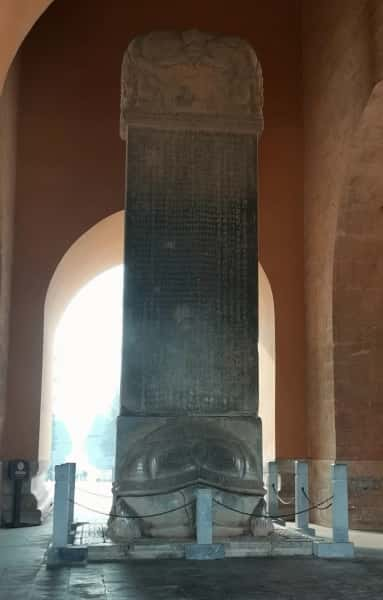
ประติมากรรมหิน (Stone Statues)
ประติมากรรมหิน หรือ “สือเซี่ยงเซิง” ตั้งเรียงรายสองข้างเส้นทางศักดิ์สิทธิ์ ประกอบด้วยรูปสลักหินคนและสัตว์ที่มีความสมจริง รายละเอียดประณีต แสดงถึงทักษะสูงสุดของศิลปะการแกะสลักในสมัยโบราณ
กลุ่มประติมากรรมนี้มี สัตว์หิน 24 ตัว (แบ่งเป็น 6 ชนิด ๆ ละ 4 ตัว ทั้งแบบยืนและแบบหมอบ) และ รูปสลักบุคคล 12 องค์ (ขุนนาง ข้าราชการฝ่ายบุ๋น และฝ่ายบู๊) ทั้งหมดถูกจัดเรียงอย่างเป็นระเบียบ สร้างบรรยากาศที่ยิ่งใหญ่และศักดิ์สิทธิ์ ทำให้เส้นทางศักดิ์สิทธิ์แห่งนี้เต็มไปด้วยความสง่างามของราชวงศ์หมิง
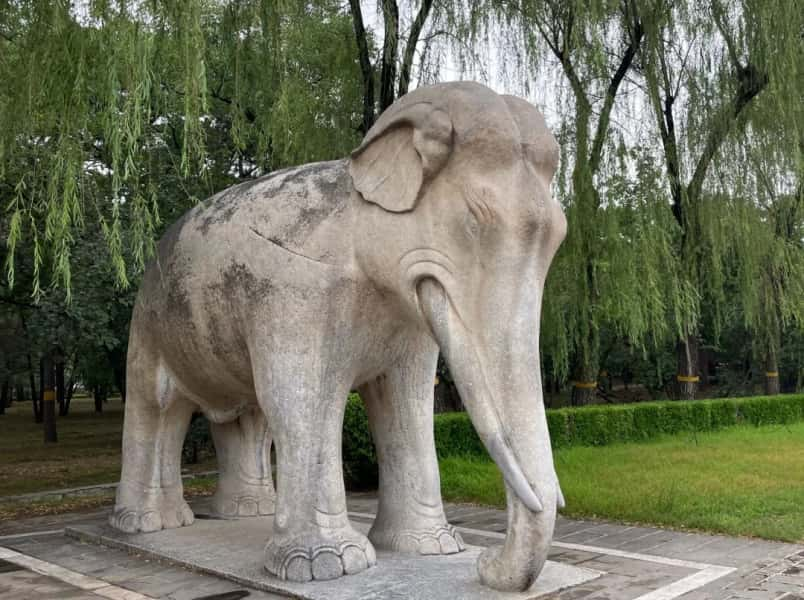
คู่มือการซื้อตั๋วสุสานหมิงสิบสามแห่ง
ปัจจุบัน สุสานหมิงสิบสามแห่ง เปิดให้เข้าชมเพียง เส้นทางศักดิ์สิทธิ์ (Shen Dao) และสุสานหลัก 3 แห่ง ได้แก่ สุสานติงหลิง สุสานฉางหลิง และสุสานเจาลิง เส้นทางที่แนะนำคือ เส้นทางศักดิ์สิทธิ์ + สุสานติงหลิง + สุสานฉางหลิง เพื่อให้ได้สัมผัสทั้งประวัติศาสตร์และวัฒนธรรมอย่างครบถ้วน หากมีเวลาจำกัด ควรเลือก เส้นทางศักดิ์สิทธิ์ + สุสานติงหลิง เนื่องจากสุสานติงหลิงเป็นแห่งเดียวที่เปิดพระราชวังใต้ดินให้นักท่องเที่ยวเข้าชม และมีคุณค่าทางประวัติศาสตร์สูงที่สุด ส่วนสุสานอื่น ๆ มีรูปแบบสถาปัตยกรรมคล้ายกัน ความแตกต่างไม่มากนัก
ราคาตั๋วเข้าสุสานหมิงสิบสามแห่ง
เส้นทางศักดิ์สิทธิ์ (Shen Dao)
- ตั๋วผู้ใหญ่: ฤดูท่องเที่ยว 30 หยวน / นอกฤดู 20 หยวน
- ตั๋วเด็ก: ฤดูท่องเที่ยว 15 หยวน / นอกฤดู 10 หยวน (สำหรับเด็กอายุ 6–18 ปี และนักเรียนระดับปริญญาตรีหรือต่ำกว่าแบบเต็มเวลา)
- ฟรี: เด็กอายุต่ำกว่า 6 ปี หรือสูงไม่เกิน 1.2 เมตร และผู้สูงอายุเกิน 60 ปี
สุสานติงหลิง (Ming Dingling)
- ตั๋วผู้ใหญ่: ฤดูท่องเที่ยว 60 หยวน / นอกฤดู 40 หยวน
- ตั๋วเด็ก: ฤดูท่องเที่ยว 30 หยวน / นอกฤดู 20 หยวน (เงื่อนไขเดียวกับด้านบน)
- ฟรี: เด็กอายุต่ำกว่า 6 ปี หรือสูงไม่เกิน 1.2 เมตร และผู้สูงอายุเกิน 60 ปี
สุสานฉางหลิง (Ming Changling)
- ตั๋วผู้ใหญ่: ฤดูท่องเที่ยว 45 หยวน / นอกฤดู 30 หยวน
- ตั๋วเด็ก: ฤดูท่องเที่ยว 22 หยวน / นอกฤดู 15 หยวน (เงื่อนไขเดียวกับด้านบน)
- ฟรี: เด็กอายุต่ำกว่า 6 ปี หรือสูงไม่เกิน 1.2 เมตร และผู้สูงอายุเกิน 60 ปี
สุสานเจาลิง (Ming Zhaoling)
- ตั๋วผู้ใหญ่: ฤดูท่องเที่ยว 30 หยวน / นอกฤดู 20 หยวน
- ตั๋วเด็ก: ฤดูท่องเที่ยว 15 หยวน / นอกฤดู 10 หยวน (เงื่อนไขเดียวกับด้านบน)
- ฟรี: เด็กอายุต่ำกว่า 6 ปี หรือสูงไม่เกิน 1.2 เมตร และผู้สูงอายุเกิน 60 ปี
เวลาเปิด–ปิดสุสานหมิงสิบสามแห่ง
- ฤดูท่องเที่ยว (เมษายน–ตุลาคม): 08:00–17:30
- นอกฤดู (พฤศจิกายน–มีนาคม): 08:30–17:00
ช่องทางการซื้อตั๋ว
- ออนไลน์: สามารถจองผ่าน WeChat Official Account หรือแพลตฟอร์มท่องเที่ยวออนไลน์ เช่น Trip.com
- การซื้อตั๋ว: Trip.com มีโปรโมชั่นพิเศษ
- เปรียบเทียบราคาตั๋วและดูดีลล่าสุด: คลิกตรวจสอบที่นี่
- ออฟไลน์: ซื้อบัตรที่จุดจำหน่ายตั๋วภายในเขตสุสานหมิงสิบสามแห่ง
บริการไกด์นำเที่ยว
ปัจจุบันพื้นที่สุสานหมิงสิบสามแห่ง ยังไม่มีไกด์อย่างเป็นทางการ นักท่องเที่ยวสามารถเดินชมเองได้ แต่หากต้องการเข้าใจเรื่องราวประวัติศาสตร์และวัฒนธรรมเชิงลึก แนะนำให้จ้างไกด์อิสระเพื่อบรรยาย จะทำให้การเที่ยวมีสีสันและได้ข้อมูลที่ครบถ้วนมากขึ้น หากมีเวลา ควรเลือกแพ็กเกจทัวร์ สุสานหมิงสิบสามแห่ง + กำแพงเมืองจีนด่านจวีหยงกวน แบบวันเดียว ได้เที่ยวสองแลนด์มาร์กสำคัญ พร้อมไกด์มืออาชีพ ประหยัดเวลาและคุ้มค่า
เส้นทางเที่ยวแนะนำในสุสานหมิงสิบสามแห่ง
หากมีเวลามากพอ ควรจัดทริป กำแพงเมืองจีนด่านจวีหยงกวน + สุสานหมิงสิบสามแห่ง ในวันเดียว โดยเที่ยวกำแพงเมืองจีนตอนเช้า และไปสุสานหมิงตอนบ่าย เส้นทางที่แนะนำภายในสุสานคือ: ประตูใหญ่ → เส้นทางศักดิ์สิทธิ์ → สุสานฉางหลิง → สุสานติงหลิง
เนื่องจากระยะทางระหว่างเส้นทางศักดิ์สิทธิ์ สุสานฉางหลิง และสุสานติงหลิงค่อนข้างไกล เดินเท้าอาจใช้เวลาเกิน 30 นาที ดังนั้นแนะนำให้นั่งรถชัตเติลบัสภายในเขตสุสานเพื่อลดการใช้แรง
- ป้ายรถชัตเติล เส้นทางศักดิ์สิทธิ์: ออกจากประตูหลงเฟิง เดินไปที่ป้ายรถตรงลานจอดฝั่งตรงข้าม
- ป้ายรถชัตเติล สุสานฉางหลิง: ลงรถแล้วรอที่เดิมเพื่อขึ้นรถต่อ
- ป้ายรถชัตเติล สุสานติงหลิง: เช่นเดียวกัน รอรถต่อที่ป้ายเดิมหลังลงรถ
วิธีเดินทางจากใจกลางปักกิ่งไปสุสานหมิงสิบสามแห่ง
รถไฟฟ้าใต้ดิน + รถบัส
- นั่งรถไฟใต้ดินสายชางผิง ออกจากใจกลางเมืองปักกิ่ง ไปลงที่ สถานีชางผิงตงกวน (Changping Dongguan Station)
- จากนั้นเดินออกไปยังป้ายรถบัสใกล้ ๆ แล้วขึ้นรถบัสสาย 314 ตรงไปยังสุสานหมิงสิบสามแห่งได้เลย
เส้นทางรถบัส
- จาก เต๋อเซิ่งเหมิน (Deshengmen): นั่งรถบัสสาย 872 วิ่งตรงถึงสุสานหมิงสิบสามแห่ง ไม่ต้องเปลี่ยนสาย
- เส้นทางอื่น: นั่งรถบัสสาย 345 Express จากเต๋อเซิ่งเหมินตะวันตก ไปลงที่ป้าย Xihuannanlu Station แล้วต่อรถสาย 872, 878 หรือ 昌67 เพื่อไปถึงสุสานหมิงสิบสามแห่ง
แท็กซี่หรือรถเรียกผ่านแอป
จากใจกลางกรุงปักกิ่งไปยังสุสานหมิงสิบสามแห่ง ระยะทางประมาณ 50 กม. ใช้เวลาเดินทางราว 1–1.5 ชั่วโมงขึ้นอยู่กับการจราจร ค่าโดยสารแท็กซี่ประมาณ 150 หยวน ส่วนบริการเรียกรถผ่านแอปอาจมีราคาสูงหรือต่ำกว่านี้ ขึ้นอยู่กับช่วงเวลาและความต้องการ
ร้านอาหารแนะนำใกล้สุสานหมิงสิบสามแห่ง
ร้านชางชุนหม่าจี (สาขาฉางหลิง)
- ที่อยู่: ชุมชน Yanshou เขตชางผิง กรุงปักกิ่ง ทางทิศตะวันออกเฉียงเหนือของประตูเหนือศูนย์บริการสาธารณสุขชุมชน Yanshou ประมาณ 150 เมตร
- ค่าใช้จ่ายเฉลี่ย: 25 หยวนต่อคน
- เหตุผลที่แนะนำ: เมนูขึ้นชื่อคือ ซาลาเปาเนื้อหมักในโอ่ง ที่ไส้แน่นและรสเข้มข้น กินคู่กับ ซุปเครื่องในแกะ (Yangza Soup) อร่อยเข้ากันสุด ๆ หลังจากเที่ยวชมสุสานเหนื่อย ๆ มาลองเติมพลังด้วยอาหารท้องถิ่นจานเด็ดที่นี่
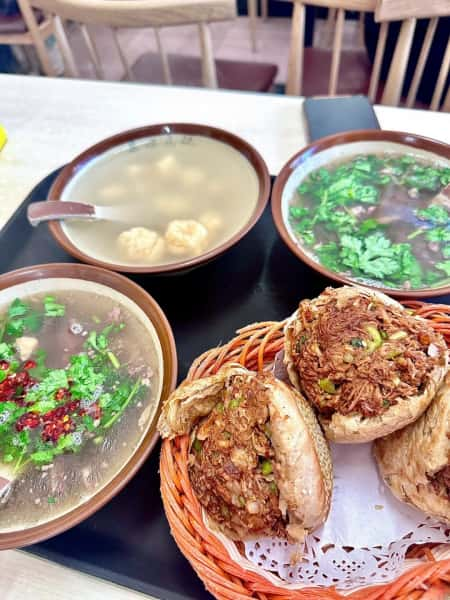
คำถามที่พบบ่อย
พื้นที่ต่าง ๆ ของสุสานหมิงสิบสามแห่ง มีความเหมาะสมกับรถเข็นเด็กแตกต่างกัน:
–เส้นทางศักดิ์สิทธิ์: เหมาะมากสำหรับรถเข็นเด็ก ถนนกว้างและเรียบ เดินสะดวกสบาย
–สุสานติงหลิง และสุสานฉางหลิง: มีบางส่วนที่มีบันไดและทางลาดชัน อาจไม่สะดวกนัก หากต้องการนำรถเข็นเด็กเข้าไป แนะนำให้ใช้รุ่นที่เบาหรือพับได้ เพื่อความสะดวกในการเคลื่อนย้าย
–สุสานติงหลิง และสุสานฉางหลิง: มีศูนย์บริการนักท่องเที่ยวที่ให้บริการฝากสัมภาระฟรี สามารถเก็บของได้อย่างปลอดภัย
–เส้นทางศักดิ์สิทธิ์: ไม่มีจุดฝากกระเป๋าโดยเฉพาะ แต่ถนนเรียบกว้าง สามารถลากกระเป๋าเดินผ่านได้ แนะนำให้นำสัมภาระเท่าที่จำเป็น เพื่อลดภาระและเที่ยวได้สะดวกขึ้น
รวมลิงก์แนะนำเที่ยวปักกิ่งที่จำเป็น
- คู่มือเที่ยวปักกิ่งฉบับสมบูรณ์ 📖
- แนะนำสถานที่ท่องเที่ยวและแผนเที่ยวปักกิ่ง🏙️
- แนะนำที่พัก 🏨
- คู่มือการเดินทาง ✈️ 🚇 🚄 🚆
- เคล็ดลับและข้อมูลจำเป็นในการท่องเที่ยว 🗺️ 🍜 📱 💸 🌤️ 💊

 English (US)
English (US)  繁體中文
繁體中文 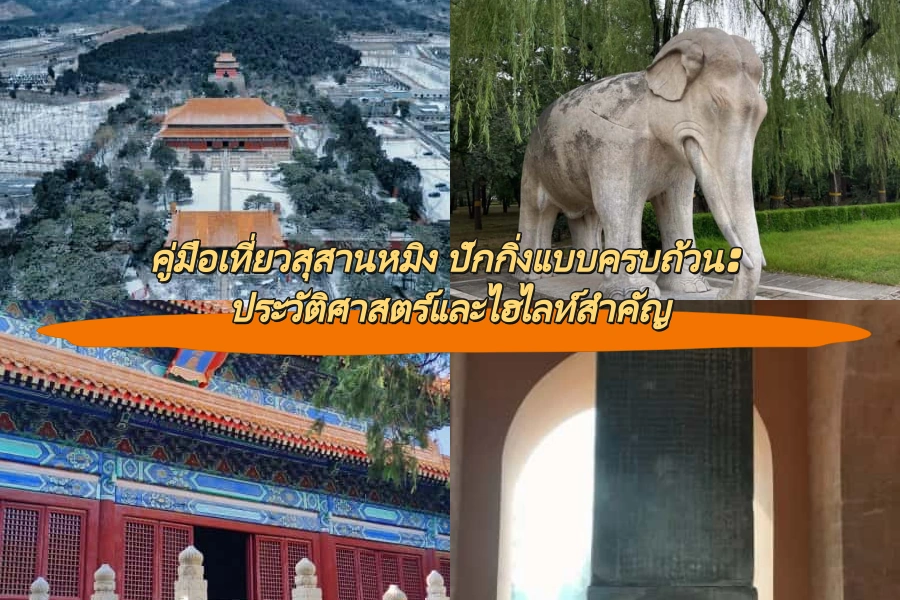
Comment (0)